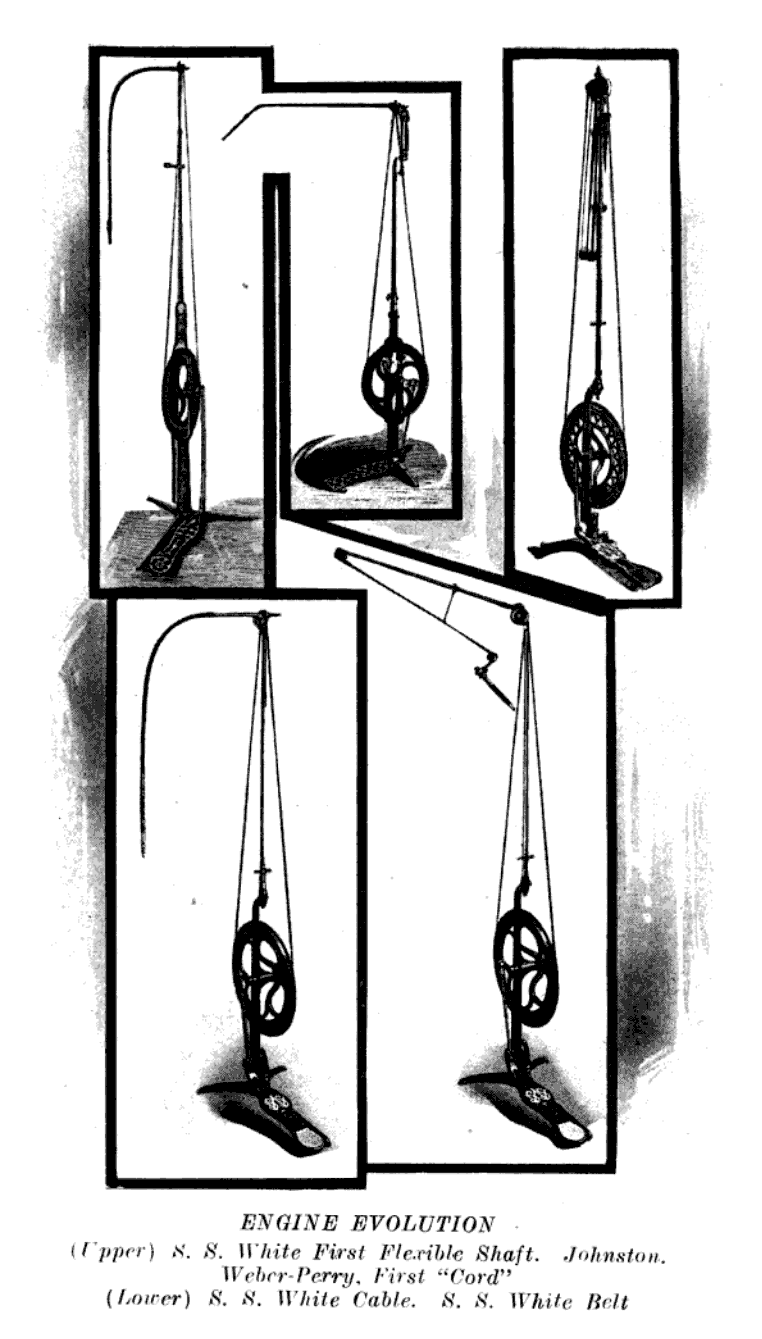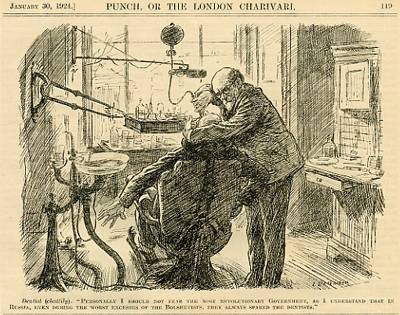The dental drill is feared and loathed by children and adults alike. However, do you know the history of this staple of the dentist’s tool tray?
Here’s a peek at a few of the many stages in the evolution of the humble dental drill.
Early Dental Instruments

An early foot drill in the collection of the museum at Benco Dental, Pittston, Pa.
It was slow, noisy, and barely effective treatment—but what more could patients hope for without electricity? Prior to the 19th century, the rudimentary drill was operated by the dentist simply by twirling it between the fingers or with a crude bow drill. This type of drill was very slow.
Long before the superior technologies of contemporary dentist drills were available, our forefathers devised creative methods to relieve oral pain. The primitive bow drill was one such early development in the history of the dental drill. This simple yet powerful device has been used to treat tooth disorders for thousands of years. The bow drill looked like an archery bow, but instead of shooting arrows, it was used to revolve a wooden rod with a sharp stone or bone at its point. The rapid spinning of the stick produced enough energy to softly drill into teeth, eliminating decay and relieving discomfort by sliding the bow back and forth.
Ancient Dental Tools in Action
Evidence of bow drills being used for dental purposes has been found in ancient civilizations such as Egypt, Greece, and the Indus Valley. These civilizations displayed a remarkable understanding of dental care, utilizing the bow drill to maintain oral health. These early dental drills represented a significant step forward in dental technology, enabling a more controlled and less painful approach to treating dental issues compared to earlier methods involving manual tools. This method, however, was certainly not painless compared to modern standards. The blunt drill took a long time to use and patients had a pretty unpleasant experience!
It was still an ingenious tool for the time. The simplicity and versatility of the basic bow drill contributed to its usefulness. Dental practitioners in the past relied on their ability and precision to efficiently use the bow drill. This tool allowed for the slow and controlled removal of decaying tooth portions, reducing the risk of future infection and disease. While the primitive bow drill’s limitations are apparent when compared to today’s sophisticated dental tools, its historical significance cannot be underestimated. It paved the way for the development of more advanced dental instruments, setting the stage for the continuous improvement of dental care techniques.
Innovations in Dental Drill Technology
The first mechanical dental foot engine was built by John Greenwood in 1790. It was inspired by a foot-powered spinning wheel. A clockwork-type dental drill was invented in 1864 by British dentist George Fellows Harrington. While being much faster than previous drills, it was also very noisy.
In 1872, American dentist James Morrison took out a patent for a foot-powered dental drill. There were only small improvements in foot-powered dental drills for years after that. A foot drill powered by an electric motor was invented by George F. Green in 1875, but as very few people had electricity at that time, electrically powered drills did not come into general use until the widespread use of electricity in dentistry after the First World War.

A page out of an SS White catalogue from the early 1900s, showing the evolution of the foot drill.
Modern Dental Drill Design
Once electricity became more commercially available, drills rapidly advanced in technology. By 1914, they could reach speeds of up to 3000 rpm. James Morrison’s system of pulleys developed in 1872 was adapted for drills right up to the end of World War II.

An electric drill from the 1940s with pulley system in the collection of the museum at Benco Dental, Pittston, Pa.
John Patrick Walsh, with members of the staff of the Dominion Physical Laboratory (DPL) Wellington, New Zealand, invented the predecessor of a modern air turbine handpiece dental drill in 1949. Belt driven high-speed handpieces appeared in the 1950s.
Current handpieces can operate at up to 800,000 rpm. However, the most common speed is a 400,000 rpm “high speed” handpiece for precision work. This is complemented with a “low speed” handpiece operating at a speed that is dictated by a micromotor which creates the momentum (max up to 40,000 rpm) for applications requiring higher torque than a high-speed handpiece can deliver, as outlined in 2007 in the article, “Handpiece, Use, Care and Maintenance,” published by the University of Detroit Mercy School of Dentistry.
A Pain-Free Future Awaits
There is no doubt that the increasing speed of the dental handpiece has led to increasing comfort on the part of the patient. Today, the laser is starting to supplant the handpiece and the future of dentistry is looking more and more pain-free. For anyone who wants to learn more about the leading edge of dentistry: Benco brings you access to all the most state-of-the-art dental technologies.


